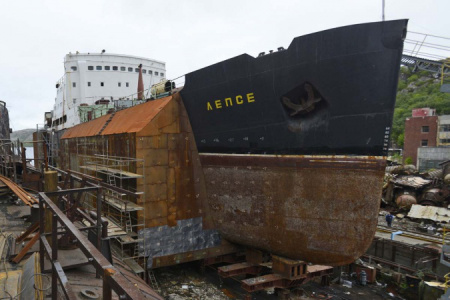A report from the National Academies of Sciences published in March 2019 recommends changes in the way that the U.S. Department of Energy manages science and technology (S&T) development in order to accelerate the cleanup of radioactive waste and contaminated soil, groundwater, and facilities at U.S. nuclear weapons sites.
A portion of DOE’s technology development should focus on breakthrough solutions and technologies that can substantially reduce schedules, risks, and uncertainties in the cleanup, says Independent Assessment of Science and Technology for the Department of Energy’s Defense Environmental Cleanup Program. This effort should be managed by ARPA-E, a DOE division that has a record of investing in innovative solutions for complex technical challenges; it would require substantial new funding…DOE’s Office of Environmental Management (DOE-EM) is responsible for cleaning up 107 sites in 31 states and one territory that were used for nuclear weapons development, testing, and related activities during the Manhattan Project and Cold War. The cleanup program began in 1989 and has, over the past three decades, cleaned up 91 sites at a cost of about $170 billion. DOE-EM projects that it will spend at least another 50 years and $377 billion to complete its cleanup of the 16 remaining sites.
The new report says that these time and cost estimates are highly uncertain – and probably low – because of significant remaining technical challenges and uncertainties, and also because additional sites and facilities may be added to the cleanup program in the future. ..Currently, DOE-EM’s management of S&T development is ad hoc and uncoordinated, the report says. Most DOE-EM-related S&T development activities are focused on individual sites, are driven and managed by contractors, and have a short-term emphasis on addressing technical challenges in existing cleanup projects…The successful cleanup of the large, complex Rocky Flats site near Denver showed that technology development and deployment can have major impacts in accelerating schedules and reducing costs, the report notes. The remaining cleanup sites – which include large, complex sites such as Hanford in Washington state, the Savannah River Site in South Carolina, and the Oak Ridge Reservation in Tennessee – provide an opportunity for S&T to have similar impacts.
The report identifies seven examples of technologies and alternative approaches that could substantially reduce costs and speed cleanup schedules – these include changes in waste chemistry and nuclear properties to facilitate treatment and disposal, and changes in human involvement in cleanup activities to increase efficiencies and reduce worker risks.
Excerpts from Breakthrough Solutions and Technologies Needed to Speed Cleanup of U.S. Nuclear Weapons Sites, National Academies Press Release, Mar. 4, 2019

